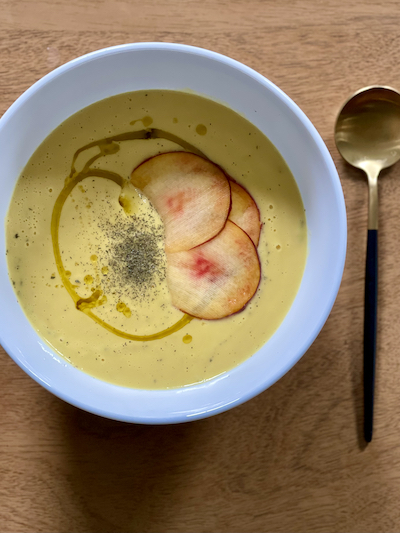Summer is not summer until there are bushels of peaches from the farmers' market near my house. I grew up in Georgia, and one thing I look forward to every summer is peach season. Whether it’s stopping at farmstands, visiting orchards to pick my own or searching for local peaches at the supermarket.
A little history: The peach tree is native to Northwest China and believed to have been cultivated since 2000 B.C. From China, the peach trees traveled to far-flung countries like India, Persia and Greece. The words peach and “persica” come from Persia where the fruit reached the Mediterranean world around 300 B.C. When the Romans conquered Europe, they brought along fruit trees for cultivation. In fact, there are peach recipes dating back to the 14th century when Marcus Gavius Apicius, a Roman elite who lived during the reign of Emperor Tiberius (14-37 C.E.), and authored a cookbook called "De Re Coquinaria," in which there is a recipe for pickled peaches. The Romans were very fond of peaches and other fruits, which they often ate at the end of meals as dessert. Fast forward to the end of the Civil War and southern landowners viewed growing peaches as more prestigious than growing cotton and used the fruit to rebrand the South.
Patina de Persicis (A Dish of Peaches): Clean hard-skinned peaches and slice, stew them; arrange in a dish, sprinkle with a little oil and serve with cumin-flavored wine. — Apicius in De Re Coquinaria
Georgia is known as the Peach State as peaches from here are known for their superior flavor, texture and appearance, plus intoxicating aromas. A popular stone fruit, Georgia peaches are the quintessential summer fruit, and are used in some of the nation's top restaurants.
Pursue a plant-based career path with a diploma in Health-Supportive Culinary Arts.
Peaches are classified into three groups: freestone, clingstone and semi-freestone, referring to how the fruit clings to the pit. And, like nectarines, they fall into a couple of categories: white or yellow and firm or melting. Nectarines and peaches are from the same species, but the former have smoother skin and firmer texture. Georgia grows all three classifications of peaches, but clingstone varieties are sweeter and juicier than other varieties and the flesh is firmly intact with the fruit.
Peaches from Georgia are mostly known for their furry, fuzzy skin and large pits in the center. The state’s red clay soil, perfect weather and moderate humidity are believed to produce the sweetest peaches. The season starts from mid-May to early August. July is the peak season for perfectly ripe, juicy peaches with a sweet aroma, golden-yellow exterior and unblemished, thin skin. Peaches start to ripen at the stem and along the groove and improve in aroma and flavor development after they are picked.
A few varieties of peaches are readily available at grocery stores including classic yellow, white, doughnut-shaped and nectarines. Within the yellow class of peaches are several local varieties grown throughout Georgia. Freestone peaches, in which the pit falls out easily, are most common across the U.S. This variety is easy to eat and ideal for baking. When shopping for peaches, the best way to tell ripeness is to smell the fruit, and the fragrance of a ripe peach is unmistakable. Look for a consistent gold-to-yellow under-color. If there is a red or "blush" peach, it’s an indication of variety, not ripeness. Peaches should be soft to the touch, not bruised or mushy. Place unripe peaches on the kitchen counter for a few days to ripen and then refrigerate for up to a week.

Here are some of the best ways to enjoy summer peaches:
- Eat them fresh.
- Cut them up for morning oatmeal.
- Thinly slice for salads.
- Incorporate in savory chutneys.
- Char on the grill.
- Make simple cobblers.




